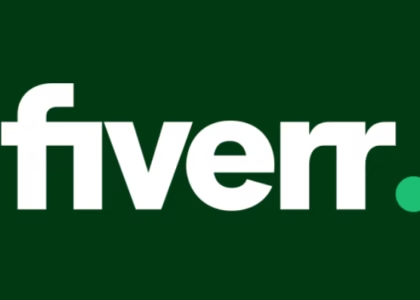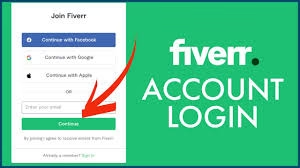PBNs In the ever-evolving world of SEO, one tactic that continues to stir debate is the use of Private Blog Networks (PBNs). For some, PBNs are a powerful shortcut to ranking success. For others, they’re a risky black-hat technique best left in the past. So, what’s the real story? Are PBNs still effective in 2025? And if so, how can you use them responsibly?
In this comprehensive guide, we’ll cover everything you need to know about PBNs—from their fundamentals to how to build or buy them, the risks involved, and how they stack up against modern alternatives.
What is a PBN?
A Private Blog Network (PBN) is a network of websites owned by an individual or group that is used to build backlinks to a main “money site” (or multiple money sites) in order to influence its rankings on search engines like Google. These supporting websites typically have expired domains with existing authority and backlinks, which makes the links they pass more valuable.
By linking from these PBN sites to your main website, you’re essentially trying to boost your domain authority artificially—something Google frowns upon.
Why Do SEOs Use PBNs?
1. Control Over Backlinks
When you build links naturally (or even through outreach), you often have little control over the anchor text, placement, and surrounding content. PBNs give you complete control. You can:
- Choose the anchor text
- Pick the exact page you want to link to
- Control the context of the link
- Adjust or remove links as needed
2. Faster Ranking Results
Because you can use exact-match anchors and link to specific pages, PBNs can provide faster results than relying solely on white-hat techniques. In competitive niches, this can make a big difference.
3. Cost-Effective Over Time
While the upfront costs to buy or build PBN sites can be high, they can save money in the long run compared to ongoing link outreach or paid placements.
How Do PBNs Work?
Here’s the basic workflow of how a PBN is set up:
- Find Expired Domains: You search for domains that have expired but still have valuable metrics (like high DA, TF, CF, DR, or existing backlinks).
- Rebuild the Site: You restore or rebuild the website to make it look natural and useful. This often includes:
- Recreating old content or adding new articles
- Setting up proper site structure
- Installing themes and plugins (for WordPress sites)
- Link to Your Money Site: Once the PBN site is live and indexed, you add contextual links pointing to your money site.
- Maintain and Hide Your Tracks: To avoid detection by Google, PBN owners often:
- Use different hosting providers (to avoid IP footprints)
- Register domains with different registrars or privacy settings
- Use unique themes and content for each site
Anatomy of a PBN Site
A good PBN site should:
- Have high-quality, relevant content
- Appear natural and not look like a link farm
- Be indexed by Google and free of penalties
- Have real or simulated traffic (like through social signals or paid ads)
- Contain outbound links to authority sites (not just your money site)
The goal is to make the site indistinguishable from a genuine blog or niche website.
Metrics That Matter for PBN Domains
When evaluating expired domains for use in a PBN, SEOs look at:
1. Domain Authority (DA)
Moz’s DA metric gives a score between 1 and 100 to show how powerful a domain is.
2. Trust Flow (TF) and Citation Flow (CF)
From Majestic SEO, these metrics give insight into the trustworthiness and quantity of backlinks.
3. Domain Rating (DR)
Ahrefs’ DR shows the strength of a domain’s backlink profile on a 100-point scale.
4. Backlink Profile
You want a clean, relevant backlink profile with:
- Few or no spammy links
- Contextual backlinks from reputable sources
- Minimal Chinese or Russian spam
5. Traffic History
Use tools like SEMrush or Ahrefs to see if the domain previously had traffic.
6. Archive.org History
Check what kind of content the site used to have. Avoid domains that were used for spam or adult/gambling/pharma content.
Pros and Cons of Using PBNs
✅ Pros:
- Control: You decide anchor text, placement, and timing.
- Speed: Can rank faster than white-hat techniques.
- Scalability: Can be scaled as needed for different projects.
- Versatility: Works in most niches.
❌ Cons:
- Risky: Violates Google’s Webmaster Guidelines.
- Expensive to build properly: Quality domains, content, hosting, etc.
- Time-consuming: Finding good domains, setting up sites, maintaining them.
- Footprint risk: If not careful, Google can deindex your entire network.
- Short-lived strategy: Sites may lose power or be penalized over time.
Is Using PBNs Black Hat SEO?
Technically, yes.
PBNs fall into the gray or black-hat SEO category because they manipulate Google’s algorithm by creating artificial links. Google’s guidelines clearly state:
“Any links intended to manipulate PageRank or a site’s ranking in Google search results may be considered part of a link scheme and a violation of Google’s Webmaster Guidelines.”
However, thousands of SEOs still use them because they work—at least when done correctly and cautiously.
Buying vs. Building PBN Links
You have two options if you want to benefit from PBNs: buying links from existing networks or building your own PBN.
Buying PBN Links
Pros:
- Faster and easier
- No need to manage or host websites
- Pay-per-link pricing
Cons:
- Less control over quality
- You don’t own the asset
- Can be expensive ($20–$300 per link depending on quality)
- Potential for being part of a spammy network
Building Your Own PBN
Pros:
- Full control over all aspects
- Can use it for multiple projects
- Long-term SEO asset
Cons:
- Higher upfront costs
- Time-consuming
- Requires knowledge of hosting, SEO, and content creation
How Much Does a PBN Cost?
Here’s a rough breakdown of what it might cost to build a single PBN site:
| Item | Cost |
|---|---|
| Expired Domain | $30–$500+ |
| Hosting (shared/VPS) | $2–$10/month |
| Content (5–10 articles) | $50–$200 |
| WordPress Setup/Design | $20–$100 |
| Maintenance (monthly) | $5–$15 |
Total Initial Cost: $100 to $800 per site
Multiply that by 10–50 sites for a serious network, and it’s easy to see how the costs add up.
Best Practices for Running a PBN in 2025
- Diversify Hosting: Use different IPs and hosting providers (like easy blog networks, cloud VPS, or rotating proxies).
- Use Unique Themes and Layouts: Avoid using the same theme or structure across all sites.
- Create High-Quality Content: Don’t skimp on content. Make sure it adds value.
- Don’t Link to Only One Site: Include outbound links to authority sites to avoid suspicion.
- Avoid Over-Optimization: Use varied anchor texts and keep things natural.
- Drip Links Slowly: Don’t link all your PBNs to a money site in one day.
- Monitor Deindexing: Use tools or scripts to check if any of your PBN sites are deindexed.
- Avoid Interlinking PBNs: Don’t link your PBNs to each other. That’s a big red flag.
What Happens If Google Detects a PBN?
If your PBN is detected:
- The PBN sites might be deindexed
- Your money site may receive a manual penalty
- You could suffer a massive drop in rankings
- Your SEO investment may go down the drain
Google has become increasingly aggressive with detecting and penalizing PBNs—especially low-quality or lazy ones.
How to Stay Safer With PBNs
If you still want to use PBNs in 2025, take these precautions:
- Focus on quality over quantity
- Avoid services that offer public blog networks
- Think like a real webmaster—make your PBN sites useful
- Use social media accounts, branding, and even fake personas to make them look legitimate
- Consider using link indexing tools to ensure your links are being picked up
Alternatives to PBNs
If the risk is too high, or you’re looking for other ways to rank, consider these white-hat and gray-hat alternatives:
- Guest Posting
- Niche Edits
- Digital PR
- HARO (Help A Reporter Out)
- Skyscraper Link Building
- Infographic Outreach
- Buying Aged Domains and Building Legit Sites
These methods tend to be safer and more sustainable, though often slower or more expensive.
Final Thoughts: Should You Use PBNs?
PBNs aren’t for everyone. If you’re managing a client site, a local business, or a brand with a reputation to protect, PBNs might be too risky. But if you’re working on affiliate sites, lead gen projects, or churn-and-burn strategies, and you know what you’re doing, PBNs can still be an effective weapon in your SEO arsenal.
Just remember: the days of sloppy, low-effort PBNs are over. In 2025, it’s all about quality, disguise, and strategic use.
Disclaimer: This guide is for educational purposes only. Using PBNs to manipulate search rankings is against Google’s guidelines and may result in penalties.
Let me know if you’d like a version of this article formatted for a blog, broken into sections for publishing, or rewritten for a specific niche (like affiliate SEO, local SEO, etc.).






